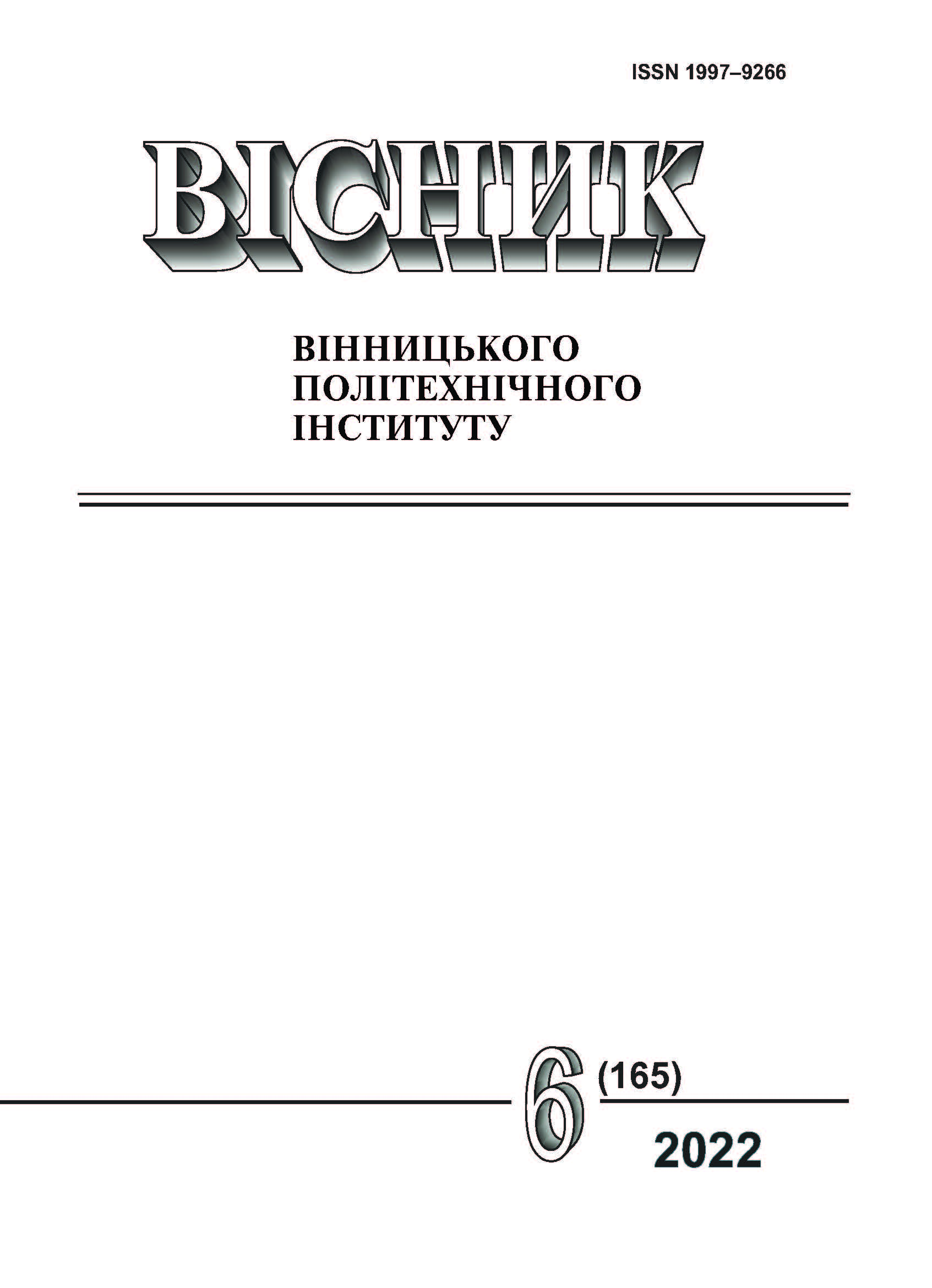A New Method for Implementing the Interval Concept of Transport Demand Modeling
DOI:
https://doi.org/10.31649/1997-9266-2022-165-6-57-64Keywords:
demand model, interval concept, matrix, correspondence, transport districtAbstract
The article examines the peculiarities of the OD-matrix generation within the framework of the interval concept of transport demand modeling, which consist in the absence of guarantees of successful distribution of known departure and arrival capacities of transport districts of the transportation object among the matrix cells, in the presence of additional, to capacities, restrictions. The possibilities of full distribution of demand on the OD-matrix in the presence of such restrictions are analyzed and two methods to overcome the existing problem are proposed. For a small number of restrictions, a two-stage matrix filling algorithm is formed. The first stage consists in the usual distribution of transport demand volumes using a random number generator, the second is in the redistribution to open cells of those values that fell into closed matrix cells using closed cycles known from the transport task. For a significant number of restrictions that arise when modeling matrices of route correspondences, or in other cases in which the modeling of transport demand using closed loops becomes impossible, has been created a new method of implementing the interval concept of demand modeling. It is based on repeated use of the basic method of distribution of transport demand without restrictions, which always leads to a complete distribution of capacities according to the OD-matrix. Restrictions imposed on the matrix are taken into account by removing from its current instance those values that are subject to restrictions. The deleted values form the conditions for the generation of the next instance of the matrix until all the departure and arrival capacities of the transport districts are distributed among such matrices. The final matrix is the sum of all the intermediate matrices created in this way. This method of forming OD-matrices allows guarantying a positive result of the generation of random matrices with restrictions and to ensure the full implementation of the interval concept of transport demand modeling.
References
Я. А. Селиверстов, и С. А. Селиверстов, «Методы и модели построения матриц транспортных корреспонденций,» Научно-технические ведомости СПбГПУ. Информатика. Телекоммуникации. Управление, № 2-3 (217-222), с. 49-70, 2015.
S. Afandizadeh Zargari, A. Memarnejad, and H. Mirzahossein, Hourly Origin–Destination Matrix Estimation Using Intelligent Transportation Systems Data and Deep Learning, 2021.
E. S. Park, L. R. Rilett, and C. H. Spiegelman, “A Markov Chain Monte Carlo-Based Origin Destination Matrix Estimator that is Robust to Imperfect Intelligent Transportation Systems Data,” Journal of Intelligent Transportation Systems, 2008.
K. Shamsigul, K. Rustam, and A. Perizat, “Methods for creating Intelligent transportation systems using dynamic microlevel model of the city based on a qualitative correspondence matrix,” in ICEMIS'20: Proceedings of the 6th International Conference on Engineering & MIS 2020. Article no. 78, 2020.
Є. В. Любий, «Визначення попиту на пересування населення малих міст маршрутним пасажирським транспортом.» дис. канд. техн. наук, 05.22.01, Харків, Україна, 2012, 191 с.
П. Ф. Горбачов, «Концепція формування систем маршрутного пасажирського транспорту в містах.» дис. д-ра техн. наук, 05.22.01, Харків, Україна, 2009, 370 с.
Є. В. Любий, і О. С. Колій, «Оцінка точності синтетичних моделей розрахунку пасажирських кореспонденцій на прикладі малих міст,» Сучасні технології в машинобудуванні та транспорті, с. 98-106, 2019.
С. В. Свічинський, «Формування функцій розселення міського населення для визначення потреб у перевезеннях громадським транспортом.» дис. канд. техн. наук, спец. 05.22.01, Харків, Україна, 2015, 225 с.
П. Ф. Горбачев, і Н. В. Мосьпан, «Імітаційна модель обслуговування разових замовлень на міжміські вантажоперевезення,» Вестник ХНАДУ, № 76, с. 32-39, 2017.
А. А. Кочина, «Формування пасажиропотоків у приміському сполученні на автомобільному транспорті.» дис. канд. техн. наук, 05.22., Харків. нац. автомоб.-дор. ун-т. Харків, Україна: Стиль-издат, 2020, 20 с.
Міністерство транспорту України, Наказ «Про затвердження Порядку і умов організації перевезень пасажирів та багажу автомобільним транспортом». [Електронний ресурс]. Режим доступу: https://zakon.rada.gov.ua/laws/show/z1282-13#Text.
T. J. Fratar, “Vehicular Trip Distribution by Successive Approximation ,” Traffic Quarterly, № 8, pp. 53-65, 1954.
J. D. Ortuzar, and L. G. Willumsen, Modelling Transport, Fourth Ed. Chichester: John Wiley & Sons Ltd, 2011, 586 p.
J. de D. Ortuzar, and L. G. Willumsen, Modelling transport, Third Ed. Chichester: John Wiley & Sons Ltd., 2006, 499 p.
Downloads
-
PDF (Українська)
Downloads: 136
Published
How to Cite
Issue
Section
License

This work is licensed under a Creative Commons Attribution 4.0 International License.
Authors who publish with this journal agree to the following terms:
- Authors retain copyright and grant the journal right of first publication.
- Authors are able to enter into separate, additional contractual arrangements for the non-exclusive distribution of the journal's published version of the work (e.g., post it to an institutional repository or publish it in a book), with an acknowledgment of its initial publication in this journal.
- Authors are permitted and encouraged to post their work online (e.g., in institutional repositories or on their website) prior to and during the submission process, as it can lead to productive exchanges, as well as earlier and greater citation of published work (See The Effect of Open Access).





